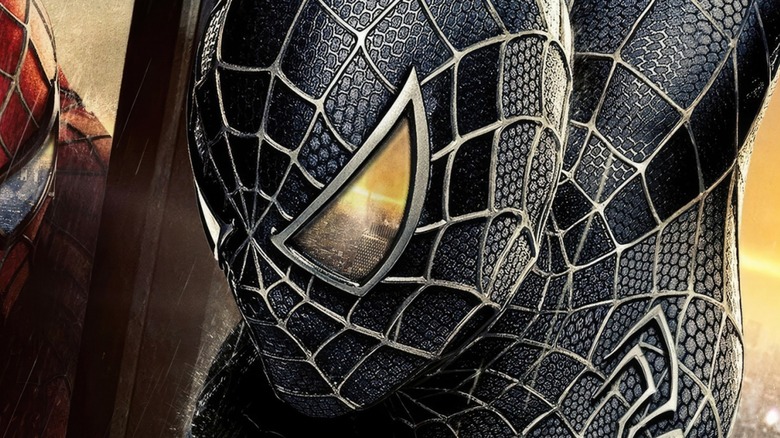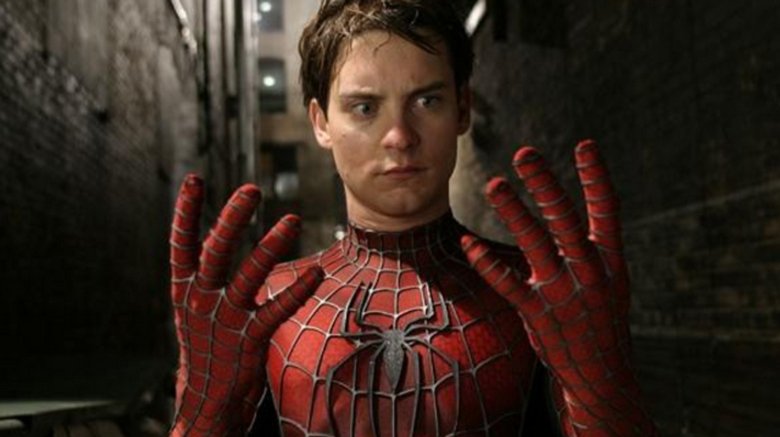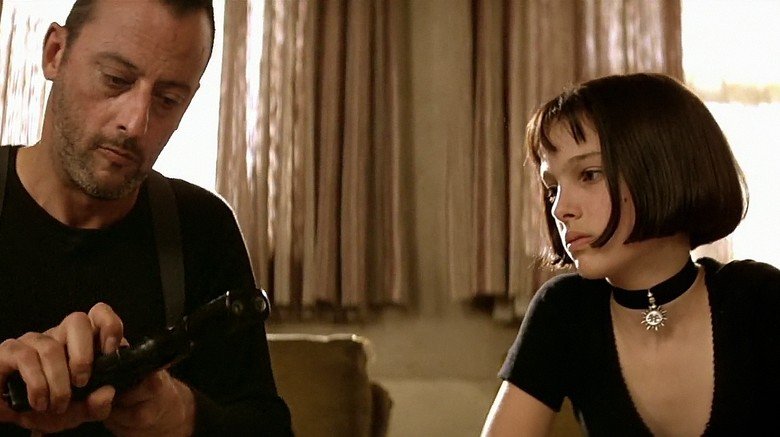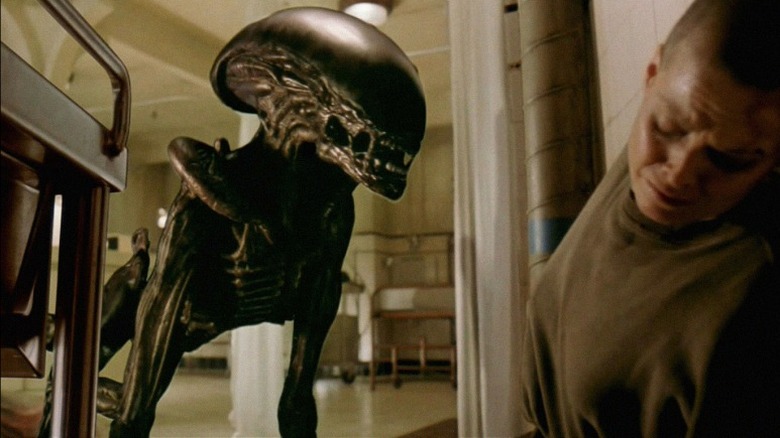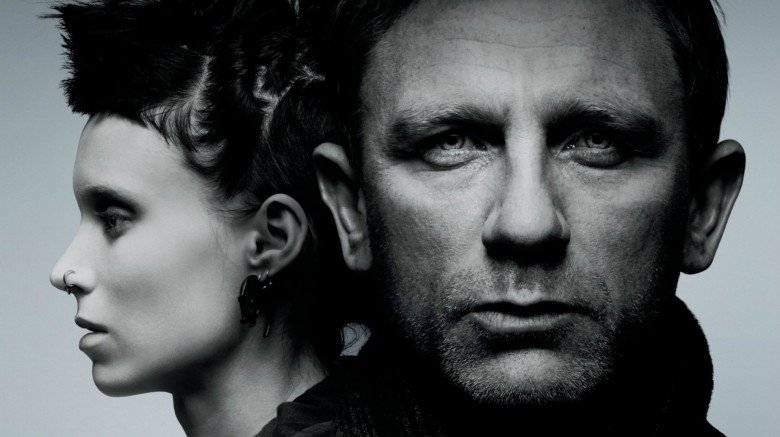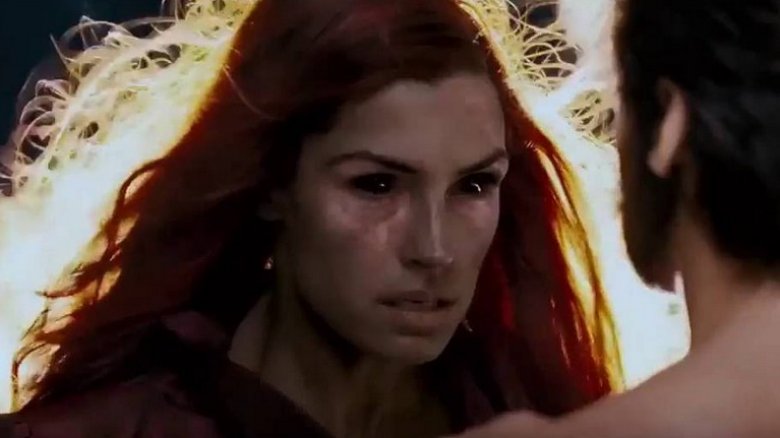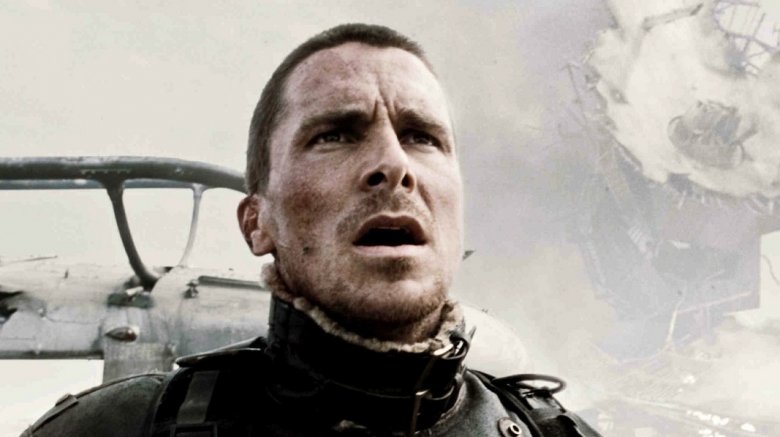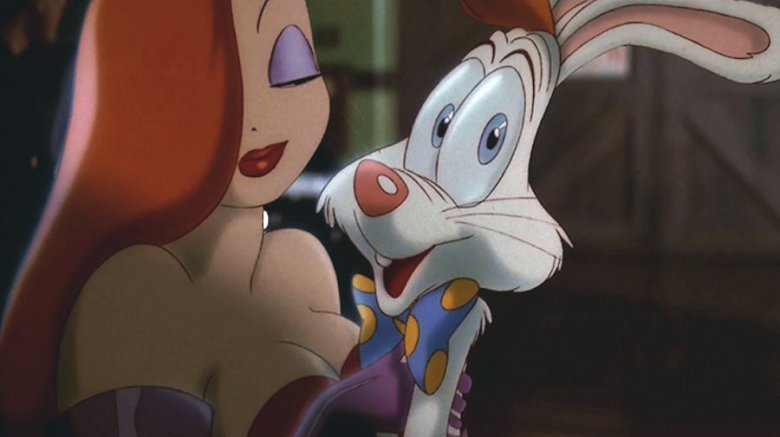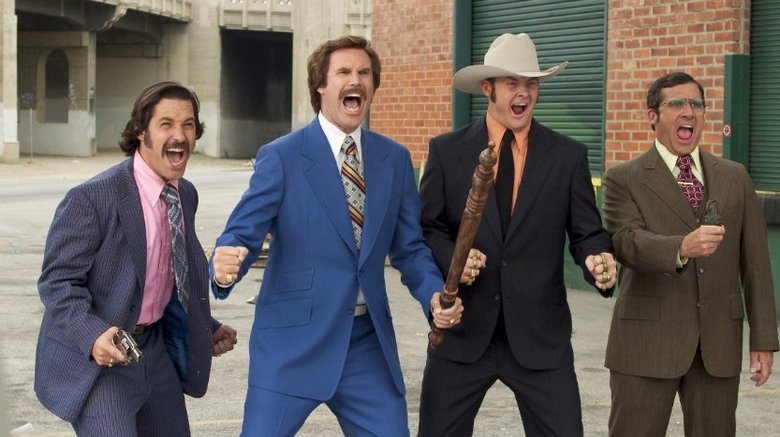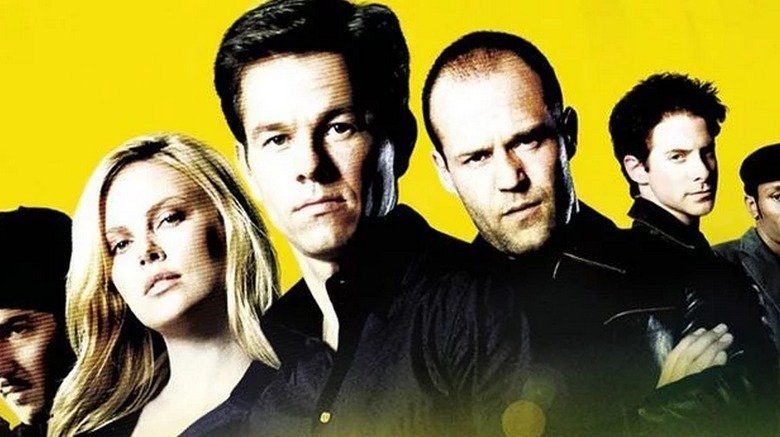Movie Sequels Canceled For A Dumb Reason
The film industry loves sequels, to the point that whenever a movie's a hit, we've been conditioned to expect a follow-up. But there are exceptions — in fact, sequels die in development all the time, and for any number of reasons.
Sometimes movies lose money. Sometimes movies make money, but not enough. Sometimes movies do just fine in theaters, but film rights change hands behind the scenes and all the plans get tossed out the window. Sometimes everyone involved wants a sequel, but the director and actors each have a million other projects, and the next thing you know, it's ten years later and your leads both look ten years older when the script says it's only been two months. The sequel winds up like a project you came up with at midnight on a whim and forgot about until a decade later, when you find all the stuff you bought for it unwrapped and unopened in a bottom drawer.
Often, when a franchise dies on the vine, it's for the best — but some stories earn another chapter, only to have it cruelly denied by a Hollywood twist of fate. With that in mind, here's a look at some movie sequels that were canceled for truly dumb reasons.
Raimi's Spider-Man 4
Spider-Man 3 was bad enough that you can't be blamed if you're surprised to learn a sequel was in the works, but there are reasons to believe a fourth installment could have redeemed the third movie. Director Sam Raimi was just as unhappy with Spider-Man 3 as fans were, and he wanted Spider-Man 4 to help his series "end on a high note."
Raimi recruited Zodiac writer James Vanderbilt to write the script, and for the movie's villain, he wanted John Malkovich to play the the Vulture. Anne Hathaway would have played Felicia Hardy, a.k.a. the Black Cat in the comics — though Spider-Man 4's Felicia Hardy would apparently have become the "Vulturess" rather than the Black Cat, which is admittedly not the most promising aspect of the unmade film.
Raimi felt the script wasn't working, knew he wouldn't be able to deliver the movie on time, and told Sony it would be best to not make the film. As he told Vulture, he knew Sony was already planning a reboot when he scrapped Spider-Man 4, and the studio announced the reboot almost immediately after it publicly revealed the cancellation of his sequel. The script for Amazing Spider-Man was already written by James Vanderbilt — the same guy Raimi recruited to write Spider-Man 4. Considering Sony was already moving forward with the reboot before Raimi threw in the towel, it seems he didn't kill Spider-Man 4 so much as he discovered the body.
The Professional - No women. No kids. No sequels.
Before he directed The Fifth Element and 2014's Lucy, Luc Besson wrote and directed 1994's The Professional, about the hitman Leon (Jean Reno) who takes the young Mathilda (Natalie Portman) under his wing after her family is murdered by crooked cops. Eventually, Mathilda convinces Leon to teach her how to become an assassin. Leon doesn't survive the film, but Mathilda does, and Portman was ready to reprise the role in the sequel Mathilda, which would have seen her working on her own as a killer for hire.
Both Portman and Besson were on board, but Gaumont Film Studios — who held the film rights to The Professional — had been on bad terms with Besson since he broke off from Gaumont and formed his own production company. The Mathilda script was eventually reworked and used as the basis for 2011's Colombiana, starring Zoe Saldana and directed by Besson's friend Olivier Megaton.
As late as 2010, Portman told MTV she would still agree to do the sequel "in two seconds," but only if Besson would direct — and it seems Besson has lost interest. In 2014. he told JoBlo, "It's too late. If I got an idea tomorrow about a sequel, of course I would do it. But I never came up with something strong enough. I don't want to do sequels for money, I want to do a sequel because it's worth it."
Vincent Ward's Alien 3
Alien 3 is generally not a favorite among fans of the franchise. The film marked David Fincher's (Se7en, Fight Club) first shot at directing a major motion picture, but he wasn't the first guy to sit in that particular director's chair. In fact, the producers considered at least eight different versions of the third Alien film, and the most promising was arguably a concept pitched by Vincent Ward (What Dreams May Come).
According to Empire Magazine (via vincentwardfilms.com), Ward caught the attention of Alien 3 producer Walter Hill with his 1988 film The Navigator: A Medieval Odyssey. Ward wanted his addition to the Alien franchise to starkly contrast the previous movies in terms of, among other things, the visual importance of the architecture. Ward's story had Ripley's pod land on a satellite populated by an order of monks who had abandoned futuristic technology for a more medieval living space. Design drawings for the structures surfaced in 2009, accompanied by commentary from designer Lebbeus Woods. The sets are like nothing you'd expect to see in a xenomorph movie.
Ward left the project when it became clear the studio wouldn't allow anything like the movie in his head to show up on the screen. Twentieth Century Fox wanted the film cheaper and it wanted it faster; production executive Jon Landau later lamented, "we set out to make a release date, not a movie." Not wanting to make a shell of what he'd conceived, Ward called it Game Over.
The Girl with the Missing Sequel
The Girl with the Dragon Tattoo — the first of what was meant to be three films directed by David Fincher based on the best-selling Millennium novels of the late Stieg Larsson — showed every sign that it was ready for sequels, grossing over $232 million worldwide. A few days before its theatrical release, Fincher entertained the idea of filming the next two movies back to back, with part two – The Girl Who Played with Fire – planned for release in 2013.
That didn't happen. In August 2012, EW reported that the second film wouldn't be released in 2013 because of extensive rewrites. At the time, it was still expected the sequel would be released with the same cast, just not as soon as hoped. In 2014, Fincher said a screenplay had been written that was "extremely different" from the book, adding that he was still confident the sequel would happen because the studio had "already spent millions of dollars on the rights and the script."
Fincher was right...and he was wrong. The studio moved forward, but not with Fincher, the original cast, or even with the same story. In March 2017, Sony announced rather than adapting The Girl Who Played with Fire, its next film from the Millennium series would be an adaptation of The Girl in the Spider's Web by David Lagencratz — the first of the series to be written by someone other than Stieg Larsson. The studio tapped Fede Alvarez (Don't Breathe) as director.
X-Men 3 - The REAL Dark Phoenix Saga
Bryan Singer regrets leaving the third X-Men film — at least, that's what he said in 2016 while promoting X-Men: Apocalypse, admitting he dropped the ball when he abandoned X-Men 3 to make Superman Returns.
"I didn't complete [X-Men 3]," Singer said, "and I felt a little like it was probably my responsibility to do that." While Singer was making sure Brandon Routh would never be typecast as Superman, Brett Ratner made X-Men: The Last Stand – one of the most hated X-films to date.
On /Filmcast (via First Showing), Mike Doughtery — one of X-Men 2's screenwriters — revealed the story he pitched to Singer. In Dougherty's version of X-Men 3, rather than joining Magneto as she did in The Last Stand, Phoenix decides to fix the world herself. She destroys prisons where mutants are held and sinks fleets of cargo ships used to transport mutant slaves. Before he learns she's alive, Cyclops creates the Danger Room out of his grief for Jean — saying she died because she wasn't prepared. Rather than being killed by Wolverine, Phoenix flies to the stars at the end of the film, first warning the X-Men she would be watching them. Concept art of Singer's vision of the film surfaced, showing a Jean Grey much more reminiscent of the Dark Phoenix we all love to fear.
So now we know what could've been if Singer hadn't been wooed away by Warner Bros. Instead, the director of Rush Hour killed Cyclops offscreen and cast Vinnie Jones as a Juggernaut with what looked like packing material on his head.
Terminator Salvation - They WON'T be back
Terminator Salvation starred Christian Bale as John Connor, the same guy everyone in the earlier films kept going back in time to save. Unlike the previous movies, Salvation didn't take the heroes back to the present, instead focusing on the post-apocalyptic war between man and machine and starting a story that was meant to be the first in a planned trilogy.
Box office returns on Terminator Salvation didn't set the world on fire, but they weren't bad — the movie earned a total domestic gross of over $125 million, and over $371 million overseas. Unfortunately, that didn't stop production company Halcyon from going belly-up and filing for bankruptcy three months after Terminator Salvation's May 2009 release. The same hedge fund that loaned Halcyon the money to purchase the Terminator film rights – and whose lien on the company cornered the studio into bankruptcy — bought those same rights from Halcyon in February 2010. The hedge fund Pacificor paid $29.5 million for the rights — over $40 million less than Halcyon's valuation of the property. Pacificor had no interest in continuing with the trilogy, and instead would go on to produce 2015's equally ill-fated Terminator Genisys.
Roger Rabbit's return (or prequel)
Who Framed Roger Rabbit begged for a sequel. The story of a cartoon rabbit who hires a gumshoe detective (Bob Hoskins) to get the skinny on his curvy wife was a critical hit, and the mix of live action and animation was innovative for 1988. The movie targeted adults and kids alike — and it made a pile of money.
According to Chris Gore's 1999 book The 50 Greatest Movies Never Made, Hollywood giants Steven Spielberg and Robert Zemeckis initially planned on a prequel titled Roger Rabbit: The Toon Platoon, which would take place during World War II and show how Roger met his sultry wife. According to a 2003 article in Animation World Magazine, Spielberg bowed out of the project when his experiences making Schindler's List left him unwilling to satirize nazis, and the unmade film was renamed Who Discovered Roger Rabbit.
The death knell of the prequel was the rise of CGI, which left shots of an animated rabbit clinging to Bob Hoskins no longer looking quite so impressive. Initially using a mix of hand-drawn animation and live action, and eventually trying with CGI, the filmmakers' test footage failed to impress Disney. Animation World reported Disney pulled the plug as the budget soared past $100 million.
There's been chatter about a sequel as recently as 2016 — with some discussions even suggesting the late Bob Hoskins would be replaced with a digital double — but so far Roger Rabbit remains a stranger to anyone born before the 21st century.
Anchorman: The Musical
Anchorman 2: The Legend Continues was no bomb, but the initial concept director Adam McKay and star Will Ferrell had for the film was a lot more ambitious.
Inspired by Ferrell's success with his 2009 Broadway production You're Welcome America, McKay had the idea of making the second Anchorman a Broadway musical before filming it. McKay told EW, "We thought we could kind of do the old Marx Brothers model where we perfected it on onstage for six months, got all the jokes right, and then we shot it."
McKay said initially Paramount was onboard, and the cast embraced the concept; as Paul Rudd put it, "I thought it was a great idea because you could go even further into the craziness of it all." McKay and Ferrell got to work right away, they were kicking around song ideas and contacting Broadway veterans. McKay confessed to feeling in over his head when he had dinner with Josh Gad, who originated the role of Elder Cunningham in The Book of Mormon. When McKay asked Gad how long it took for Mormon to come together, Gad said it was workshopped for four years.
McKay never found out if it would take him as long to workshop an Anchorman 2 musical. Once Paramount received his request for a $60 million budget, those Broadway dreams died. Ferrell isn't convinced Paramount made the right choice. "I think on some level," he told EW, "we would've sold it on how bad it was."
The Brazilian Job
Just about everyone involved with 2003's heist hit The Italian Job was good to go for the proposed sequel, The Brazilian Job. Mark Wahlberg, Charlize Theron, Jason Statham, Seth Green, and others were saying late into the aughts that they were open to returning to their roles for a second heist. The sequel, initially meant for release in 2005, was eventually pushed back to 2007 because of script revisions. In August 2005, David Twohy (Pitch Black) pitched an original heist film called The Wrecking Crew to Paramount, but the studio convinced him to rework it for The Brazilian Job. Still, by 2007, a script had yet to be cleared for takeoff.
In 2008, Statham suggested to IGN that "somebody should just erase it from IMDb," calling the long-gestating sequel "one of those things that's just sitting around." Twohy told Film Stage in 2010 that the sequel "probably isn't happening," and Seth Green seemed to have the last word on The Brazilian Job in 2010, when he told IGN that the sequel "doesn't exist" and called it a "wonderful myth of IMDb."
